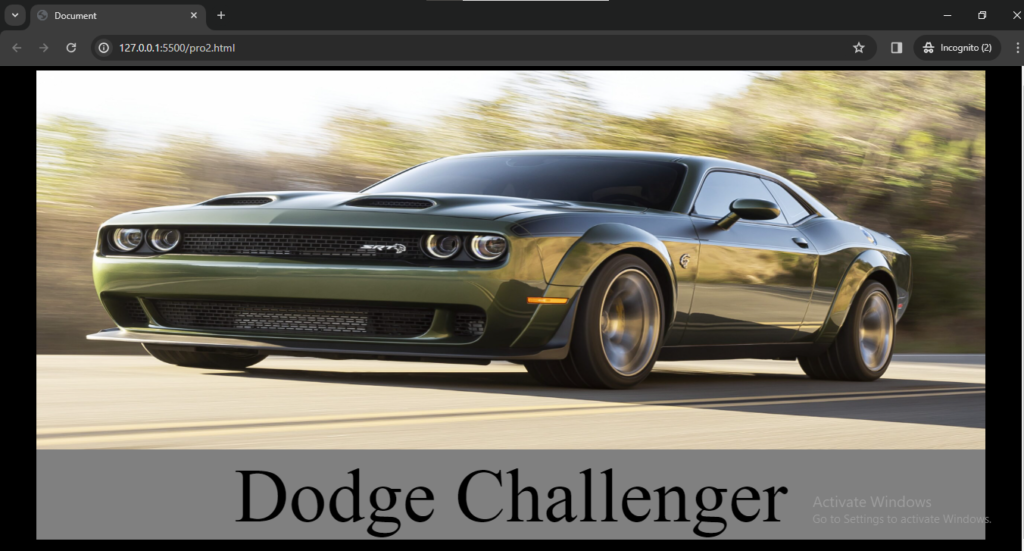Introduction
The <figure> element represents self-contained content, potentially with an optional caption, which is specified using the <figcaption> element. The figure, its caption, and its contents are referenced as a single unit.
Here’s a simple example:
<!DOCTYPE html>
<html lang="en">
<head>
<meta charset="UTF-8">
<meta name="viewport" content="width=device-width, initial-scale=1.0">
<title>Document</title>
<style>
body{
background-color: black;
}
figure{
background-color: gray;
}
img{
width: 100%;
height: 500px;
}
figcaption{
text-align: center;
font-size: 100px;
}
</style>
</head>
<body>
<figure>
<img src="img.jpg" alt="A description of the image">
<figcaption>Dodge Challenger</figcaption>
</figure>
</body>
</html>Output :

In this example:
- The
<figure>element contains an<img>element representing an image. - The optional
<figcaption>element provides a caption for that image.
Key points about the <figure> element:
1. Grouping Content: It is used to group together related content that should be treated as a single unit.
2. Accessibility: When used with <figcaption>, it helps provide additional context or information about the content for accessibility purposes.
3. Media Content: It’s commonly used with images, videos, audio, diagrams, and other types of multimedia content.
4. Optional <figcaption>: While <figcaption> is optional, when included, it typically follows the content within <figure> to provide a caption for that content.
5. Multiple <figure> Elements: A document can contain multiple <figure> elements, each encapsulating different pieces of content.
<figure>
<img src="image1.jpg" alt="Image 1">
<figcaption>Caption for Image 1</figcaption>
</figure>
<figure>
<video controls>
<source src="video.mp4" type="video/mp4">
Your browser does not support the video tag.
</video>
<figcaption>Caption for the video</figcaption>
</figure>
The use of <figure> and <figcaption> provides a way to structure content in a semantically meaningful manner, making it clear that certain content and its caption are related. This can enhance both the visual presentation and the accessibility of the content on the web.
